Attention A T users. To access the menus on this page please perform the following steps.
1. Please switch auto forms mode to off.
2. Hit enter to expand a main menu option (Health, Benefits, etc).
3. To enter and activate the submenu links, hit the down arrow.
You will now be able to tab or arrow up or down through the submenu options to access/activate the submenu links.
Locator
Contact
Search
Lethal Means Safety Evidence
 |
|||
 |
 |
 |
 |
Myths and facts about Lethal Means Safety and suicide prevention
The Myth: A common myth in suicide prevention is that individuals who want to die will always find a way to do so. The Facts: This is not the case. Increasing the time and distance between someone with suicidal intent and lethal means can reduce suicide risk. When adopting lethal means safety counseling (LMSC) within your clinical practice, you should know these 4 key points: |
||
| 1. Nine in ten of those who survive a suicide attempt do not go on to die by suicide. Link to reference | ||
| 2. Not all methods are equal with respect to lethality. For example, 90% of suicide attempts made with a firearm result in death, compared with around 1% of suicide attempts made by ingestion or using sharp instruments. Link to reference |
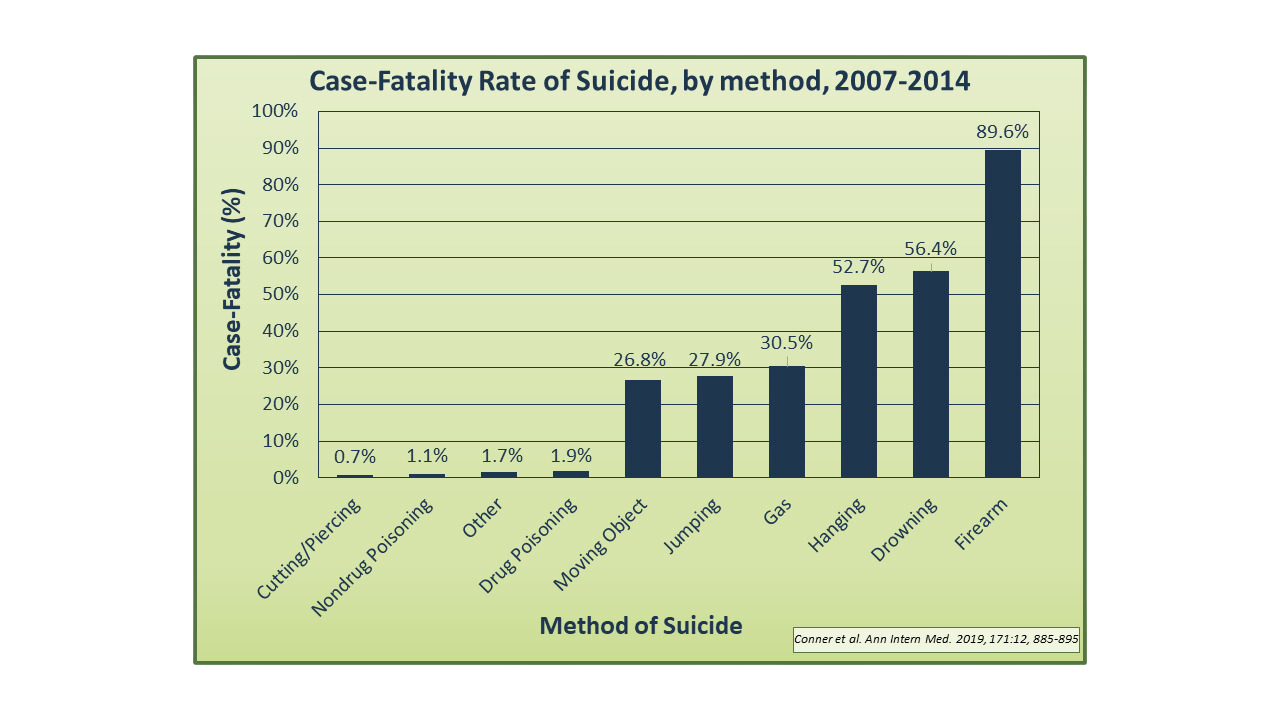
| This graph shows that firearms are the most lethal method of attempting suicide. | ||
3. Patients may not have access to or consider multiple means of suicide and will often choose a method that is readily available. Thus, reducing access to one method might be critical. |
||
| 4. Suicidal crises are often brief and temporary. Among 153 survivors of nearly lethal suicide attempts, 24% said it look less than five minutes for them to act on a suicidal impulse. Increasing the time and space required to readily access a lethal method can save lives. Link to reference | ||
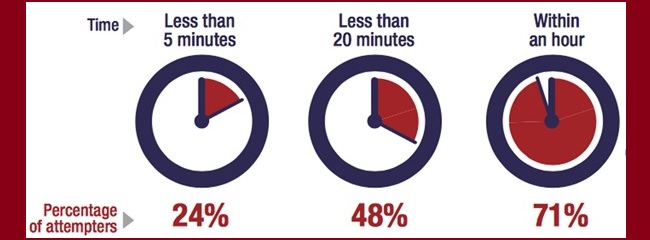
| This figure from the VA Office of Mental Health and Suicide Prevention highlights that 24% of those who attempted suicide said it look less than five minutes for them to act on a suicidal impulse. | |||
Firearms and safety
Firearm injury is the most common method of suicide among Veterans. In 2021, firearms were the method of suicide in 73.4% of male Veteran suicide deaths and 51.7% of female Veteran suicide deaths, according to the 2023 National Veteran Suicide Prevention Annual Report. Find the latest national Veteran suicide data and reporting. Link to reference
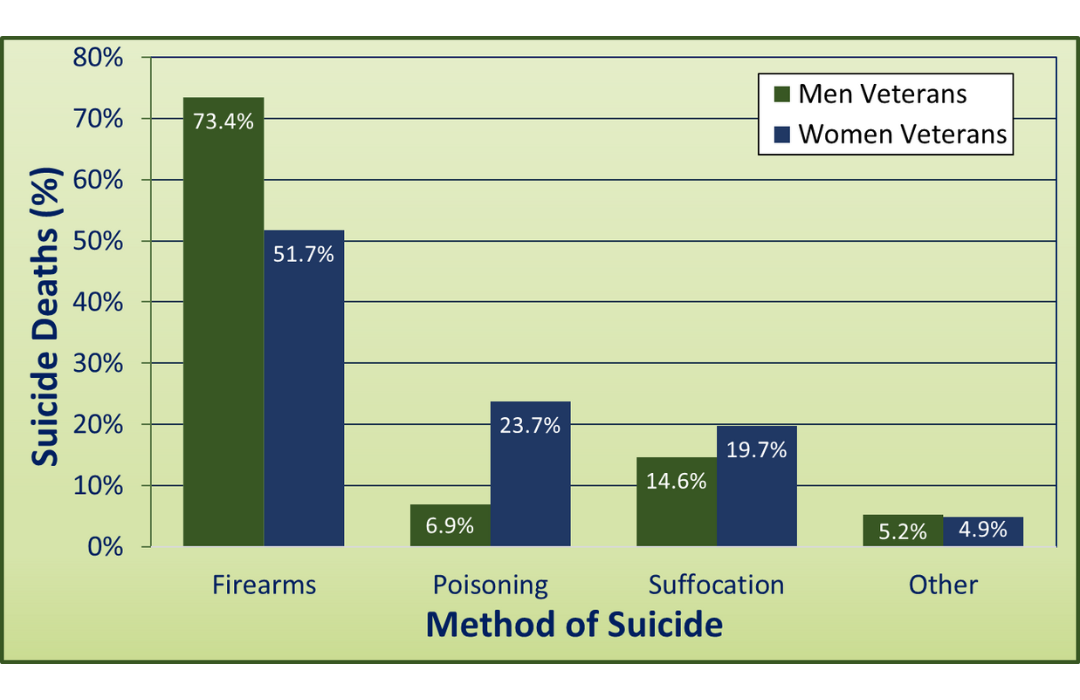
| Firearm injury is the most common method of suicide among both male and female Veterans. |
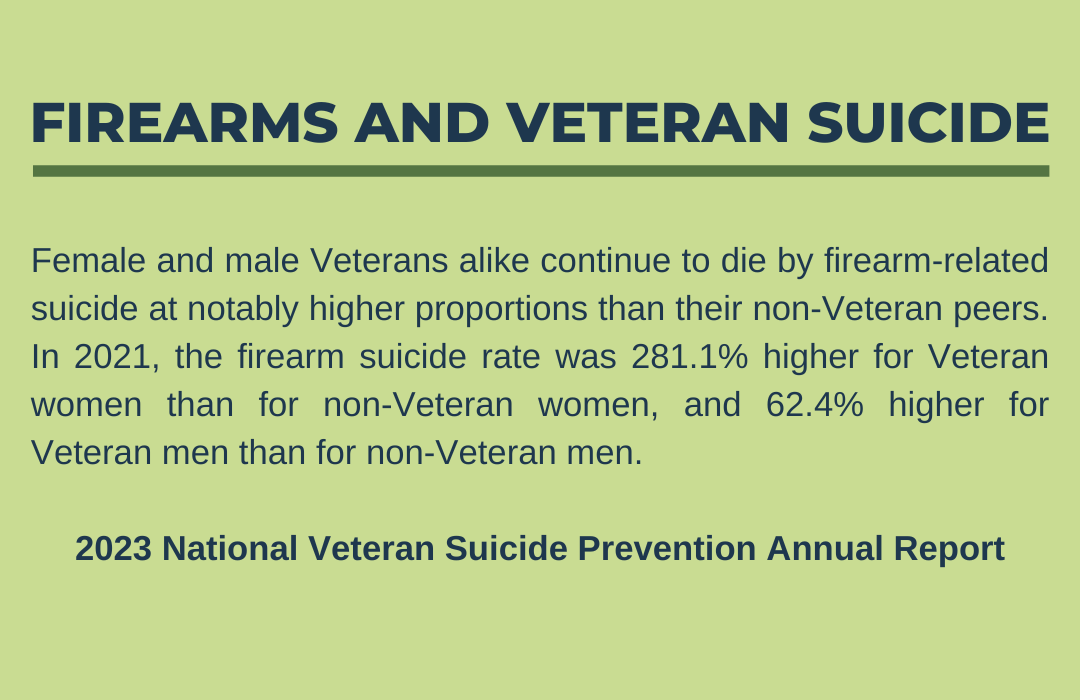
| Female and male Veterans die by suicide at notably higher proportions than their non-Veteran peers. In 2021, the firearm suicide rate was 281.1% higher for Veteran women than for non-Veteran women, and 62.4% higher for Veteran men than for non-Veteran men. 2023 National Veteran Suicide Prevention Annual Report |
||
1. United States (U.S.) states and regions with higher prevalence of firearm ownership have higher rates of both suicide and firearm-related suicide. Link to reference 1 | Link to reference 2 | Link to reference 3 |
||
| 2. Increased risk for suicide among firearm owners is not explained by differences in mental health, suicidal ideation, or other suicide risk factors between households with and without firearms. Link to reference | ||
| 3. Firearm ownership is common among Veterans—nearly half of Veterans reside in a household with a firearm. Link to reference |
||
| 4. One in three Veteran firearm owners stores at least one firearm loaded and unlocked. Link to reference | ||
| 5. A 2019 study of U.S. Army service members found that owning a handgun and storing a firearm loaded were associated with increased risk of suicide. Link to reference | ||
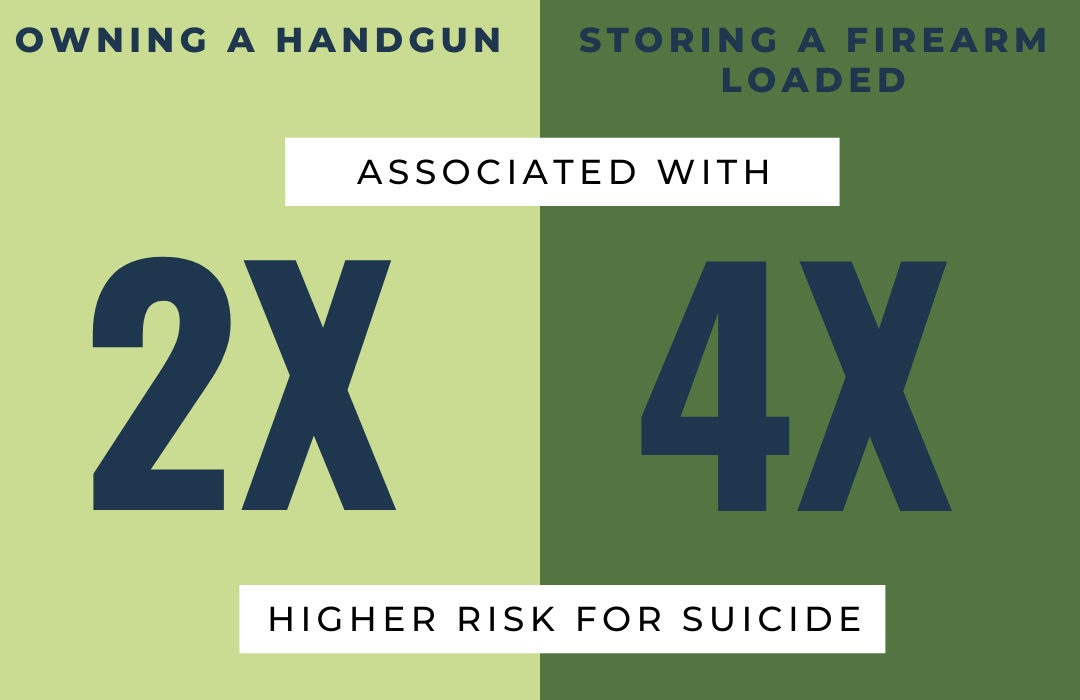
| Owning a handgun is associated with a two-fold increase in suicide risk. Storing a firearm loaded is associated with a four-fold increase in suicide risk. |
LMS firearms population case study
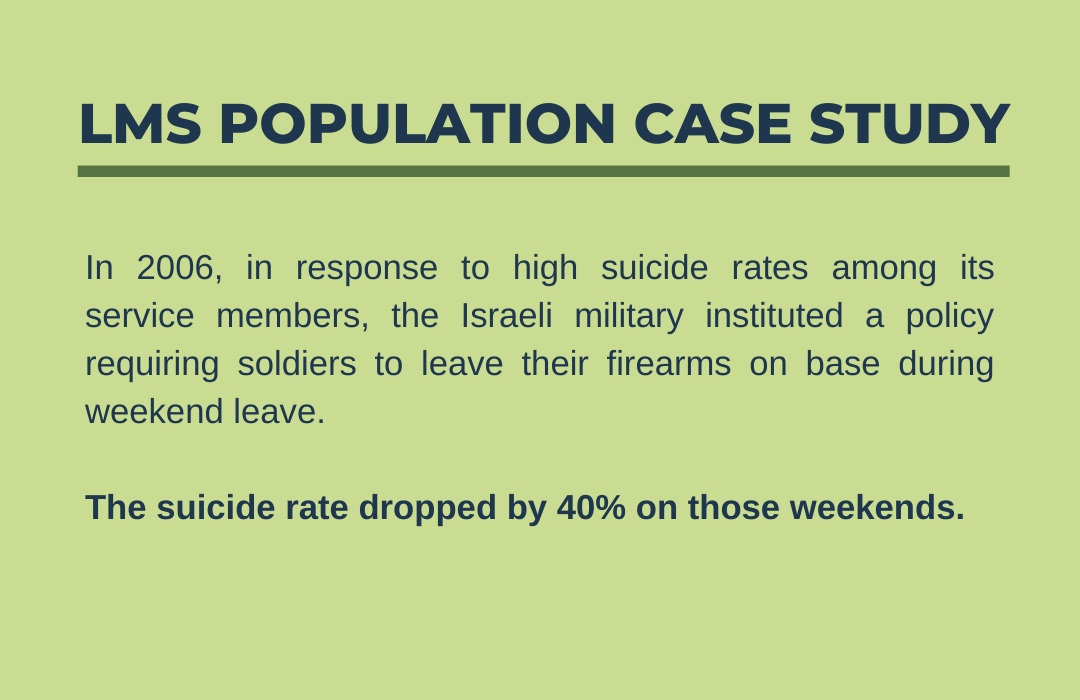
| This study illustrates that limiting access to firearms reduced suicide rates among service members in the Israeli military. Link to reference. |
Medications, inhalants and suicide
1. Access to toxins, such as carbon monoxide (CO) or potentially hazardous medications (e.g., acetaminophen, opioids, benzodiazepines), is associated with increased suicide risk. Link to reference |
||
| 2. In the United Kingdom (U.K.), legislation that encouraged blister packing of analgesics and limitations on dispensed pill quantities led to reductions in overdose suicide. Link to reference |

| Medication in blister packaging. |
LMS inhalants population case study
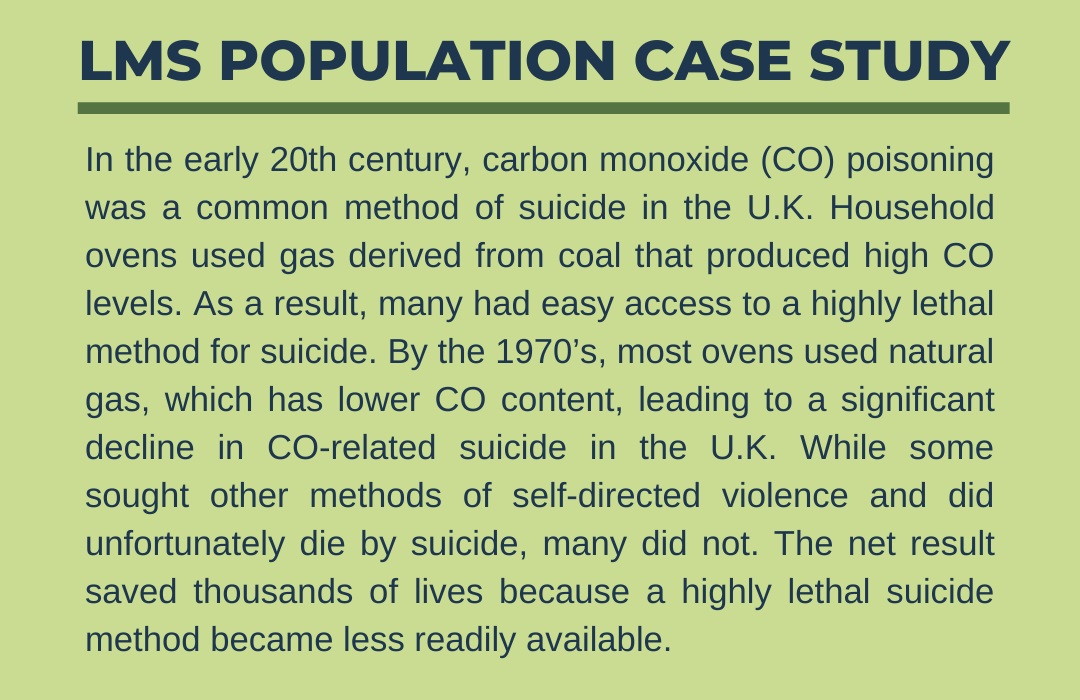
| A 1976 study showed that reducing access to a common but lethal poisonous gas led to significantly reduced suicide rates. This study reported a decline in carbon monoxide (CO)-related suicides in parallel with the decreasing concentrations of CO in burned fuels in the U.K Link to reference. |
Other lethal means and suicide
1. Data on reducing suicide via access to bridges or tall buildings. Link to reference |
| 2. Data on access to lethal pesticides and suicide prevention. Link to reference 1 | Link to reference 2 | Link to reference 3 |
Ask questions or get help
Suicide Risk Management Consultation Program
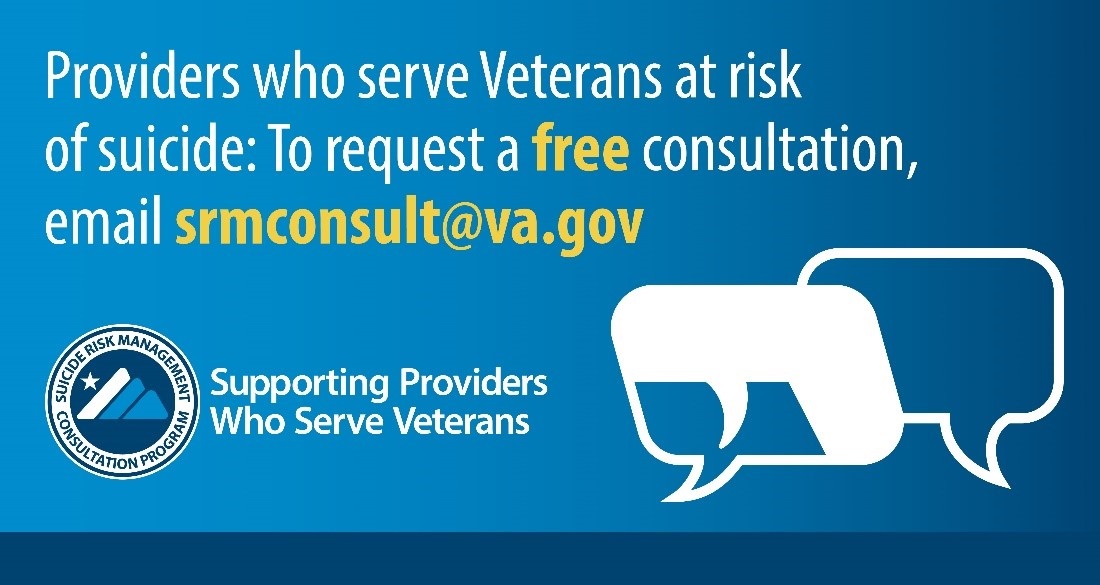
| The Suicide Risk Management Consultation Program (SRM) provides free consultation, support, and resources that promote therapeutic best practices for both VA and community providers who treat Veterans at risk of suicide. Visit the SRM page. |
Last Updated 20 December 2023



















